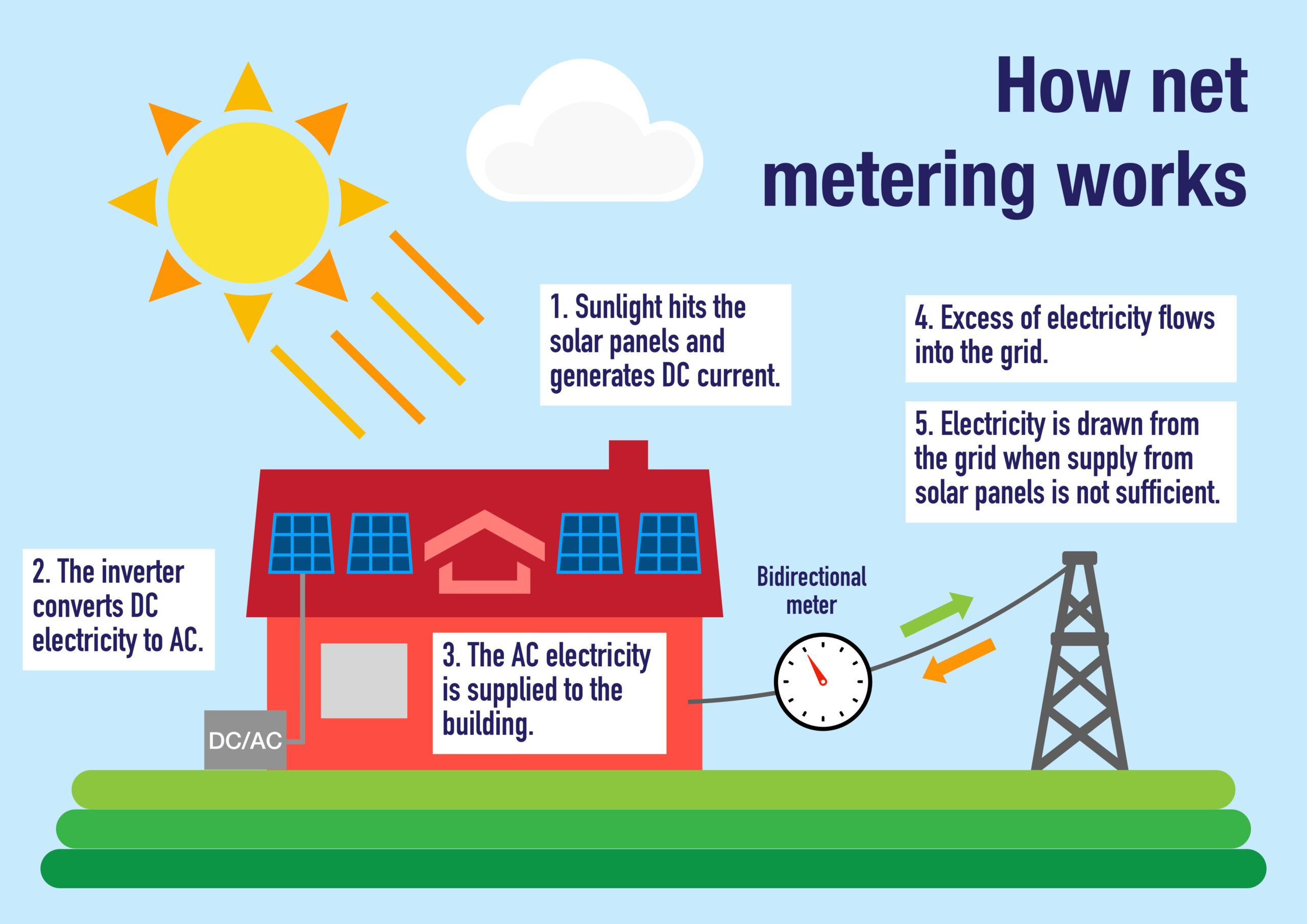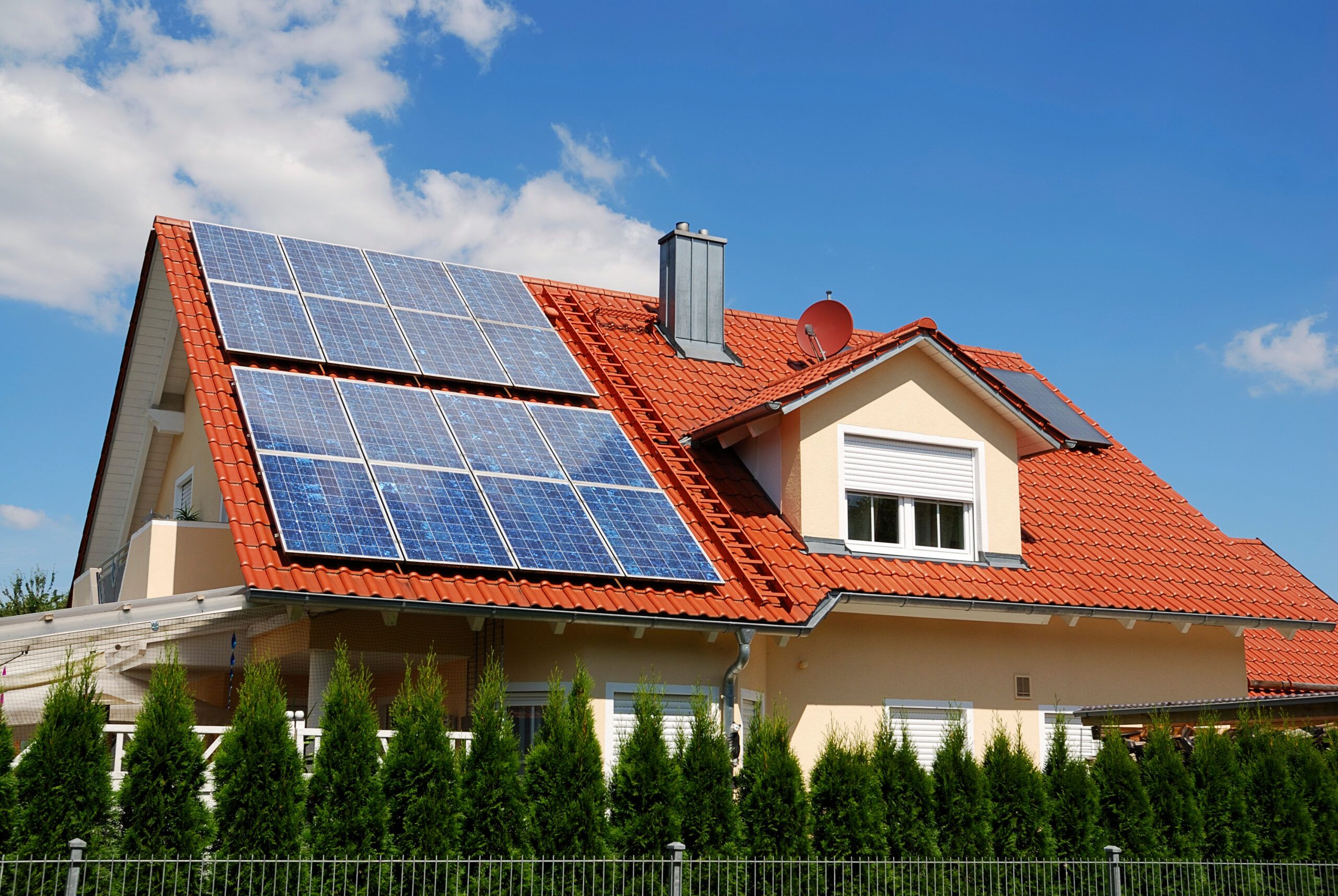Net Metering: How You Can Earn Money from Your Solar Panels
Net metering is a system that allows homeowners and businesses to earn credits for the excess solar energy they generate and send back to the grid. This system can be a significant financial benefit for those who choose to invest in solar energy, as it enables them to offset their energy costs and even earn money for the excess energy they produce.
In this article, we will explore what net metering is, how it works, and how Compass Solar can help you take advantage of this system to maximize your savings and reduce your environmental impact.
What is Net Metering?

Net metering is a system that allows homeowners and businesses to send excess solar energy back to the grid, earning credits for the energy they produce. These credits can then be used to offset energy costs during times when the solar panels are not producing enough energy, such as at night or on cloudy days.
The net metering system operates on a one-to-one basis, meaning that for every kilowatt-hour (kWh) of solar energy sent back to the grid, the homeowner or business owner earns a credit of one kWh. This credit can then be used to offset the cost of energy purchased from the grid during times when the solar panels are not producing enough energy.
How Does Net Metering Work?
Net metering works by measuring the energy produced by the solar panels and the energy consumed by the home or business. A bi-directional meter is installed to measure the energy flowing in both directions – from the grid to the home and from the home to the grid.
When the solar panels are producing more energy than the home or business is consuming, the excess energy is sent back to the grid, and the meter spins backward, earning credits for the energy produced. When the solar panels are not producing enough energy, such as at night or on cloudy days, energy is drawn from the grid, and the meter spins forward, consuming the credits earned during times when excess energy was produced.
How Can Compass Solar Help?
Compass Solar is committed to helping homeowners and businesses take advantage of the benefits of solar energy, including the net metering system. Our team of experienced professionals can provide a free solar analysis to determine the solar potential of your property and help you design a custom solar panel installation that meets your specific needs and budget.
We offer a variety of financing options to make solar more accessible and affordable, including solar leases, solar loans, and power purchase agreements. Our team will work closely with you to determine the best financing option for your situation, ensuring that you can take advantage of the financial benefits of solar energy without breaking the bank.
Once your solar panel installation is complete, Compass Solar will continue to provide ongoing support and maintenance. We offer a variety of service plans to ensure that your system continues to perform at its best, including monitoring services and regular maintenance check-ups.
In addition to helping you take advantage of the net metering system, Compass Solar can also help you explore other ways to maximize your savings and reduce your environmental impact. This includes exploring energy efficiency measures, such as installing LED lighting, upgrading insulation, and replacing outdated appliances.
Conclusion
Net metering is a system that allows homeowners and businesses to earn credits for the excess solar energy they generate and send back to the grid. This system can be a significant financial benefit, enabling you to offset your energy costs and even earn money for the excess energy you produce.
Compass Solar is committed to helping you take advantage of the net metering system and other benefits of solar energy. Our team of experienced professionals will work closely with you to design a custom solar panel installation that meets your specific needs and budget, and we offer a variety of financing options to make solar more accessible and affordable.
Contact us today to learn more about how we can help you take advantage of the financial and environmental benefits of solar energy through net metering










